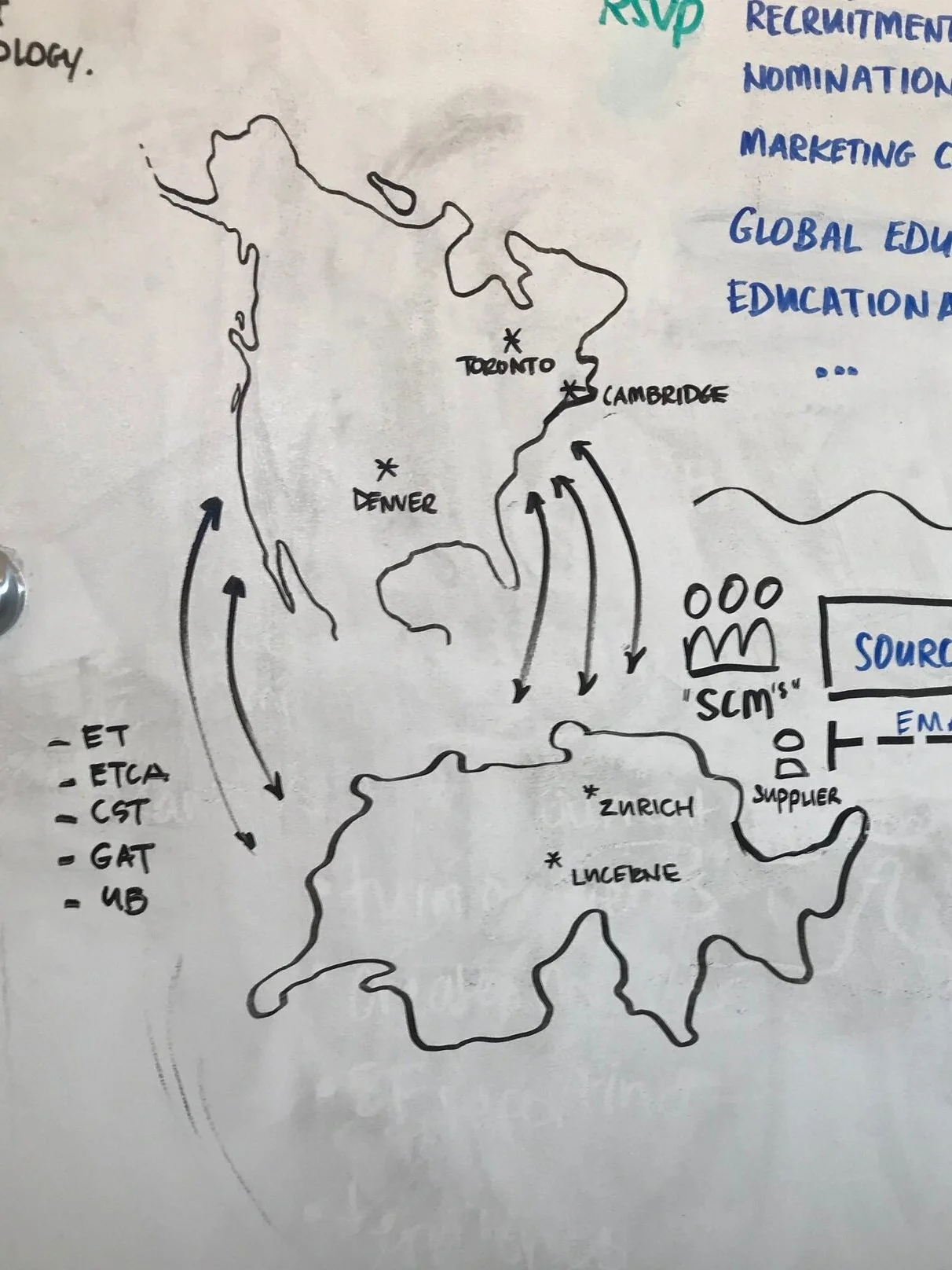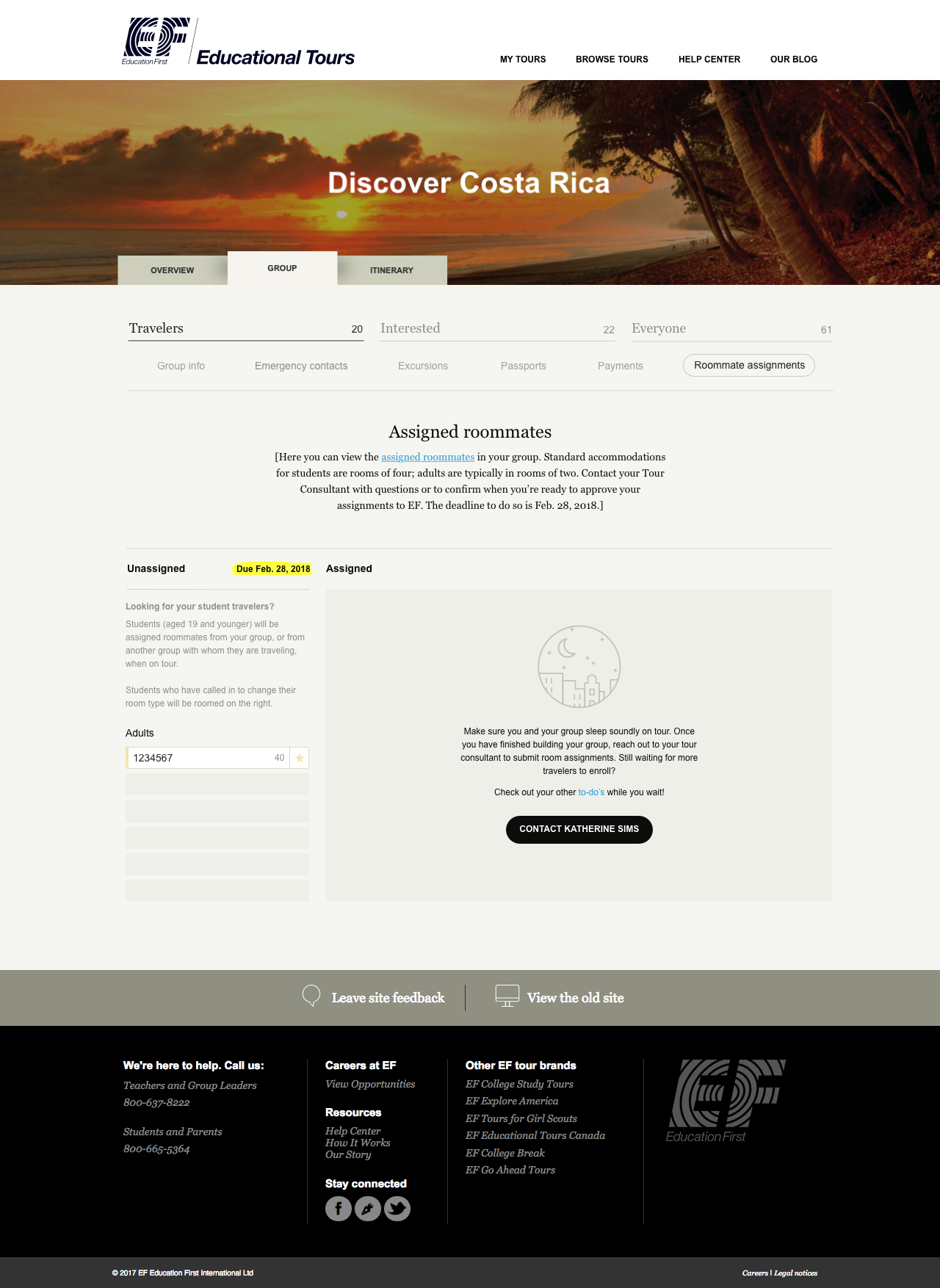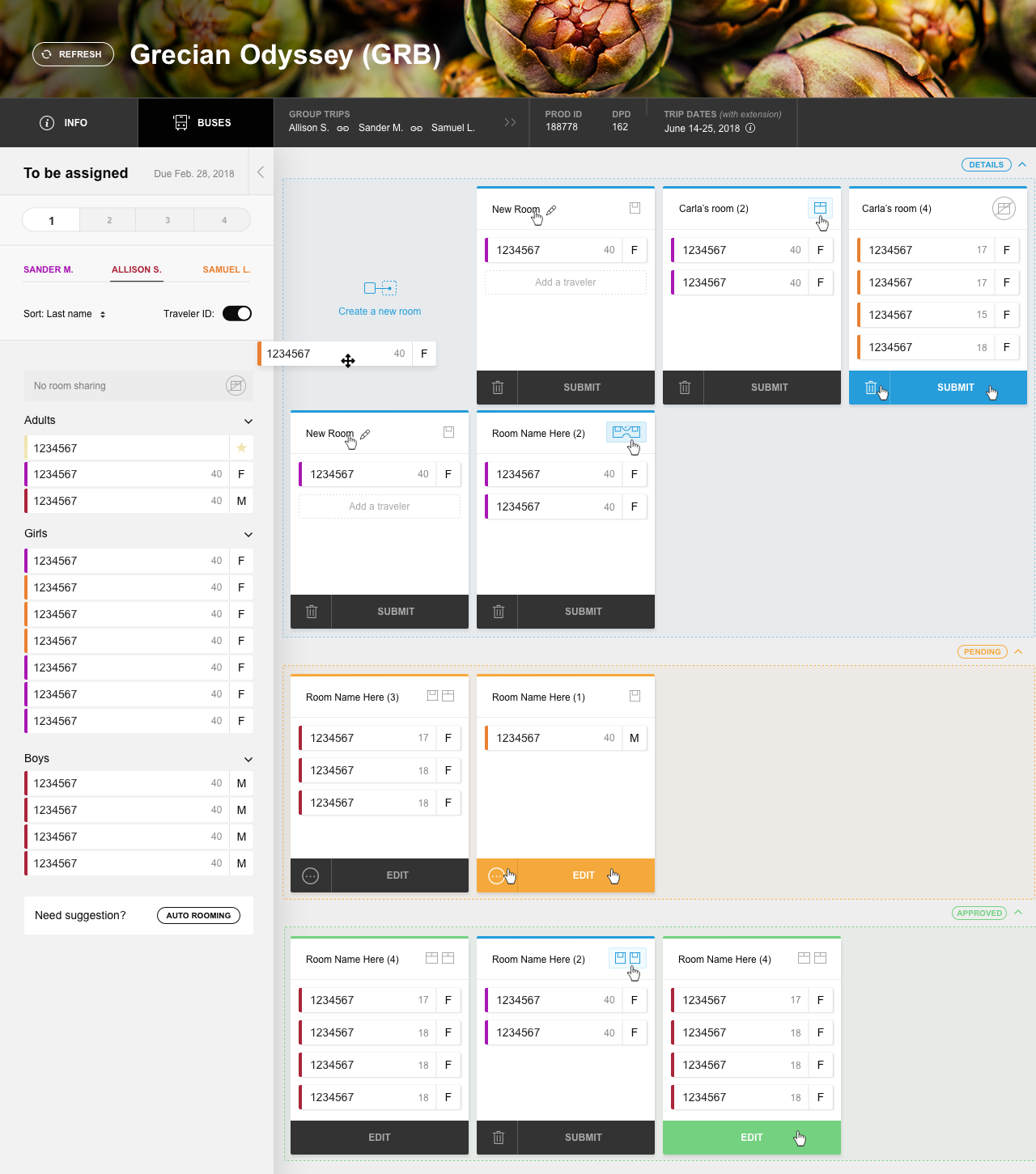The Project
At EF the term "rooming" brings chills; it's a gnarly problem that been around for 12 years and means something different to each stakeholder in the business. To some it means going over budget every year because of inevitable late rooming changes, to others it means not being able to meet the expectations of our travelers when it comes to their accommodations on tour. EF's rooming problem has hurt relationships with our customers, our suppliers, and between the sales and operations side of the business... two departments with conflicting incentives. Thus, when the Tour Prep Agile Team was tasked to "fix rooming" we knew we had a hefty challenge ahead of us.
First and foremost, define "rooming" for all our stakeholders -- what problem(s) are we truly seeking to solve?
Fix "fall-off"; the concept of data failing to write to our database without any warning or notification of failure.
Solve "rooming" for a variety of products while limiting the amount of deviations.
The Team
The Tour Prep Team works in an agile framework, planning sprints every 2 weeks. We're a small cross-functional team consisting of a product owner, tech lead, product/UX designer, business analyst/scrum master, front-end developer, and a back-end developer, with part time help from UI and Copy specialists.
I partnered closely with the product owner and tech lead to develop a holistic vision and strategy.
Discovery
The road map for our lane took about 6 months to develop and it involved interviews with each product and stakeholder around the business (including with our operations team over in Lucern, Switzerland). Through a variety of design thinking exercises the team was able to tease out the core rooming problems and map them for different rooming users. Through iteration and validation we reached a minimum viable product that solved rooming for all stakeholders and users, and significantly improved the on- and off-line experience for customers.
Impact [on the business] and difficulty [to build] matrix
Design thinking exercise with rooming users and stakeholders... "if you could solve [identified rooming problem] as another company, how would you do it?"
Putting Customers First
As an experience designer I am always planting customer experience seeds using a set of personas that were built and are maintained by our dedicated researcher. In addition to that, I had to convince the business why we were solving for our customer at all, since the impacts of rooming on them are not directly felt by the business. We captured and amplified the issues our customers felt around the topic of rooming, and how solving for those actually has a rippled affect on EF's internal processes. Our design walked through a variety of scenarios demonstrating a multi-system solution. One example explored a particular feature set that would help customer change their room-type before tour; a process that today is done over the phone, if and only if someone communicated the option of changing rooms to the customer (this often does not happen until it's too late, making production of the room difficult).
View that prototype here in invision →
A new way to talk about rooming
One key finding which became the backbone of our new system is that customers don't understand our room types. Many of them have never traveled abroad before and are mostly unfamiliar with hotel European hotels are set up. Single, double, twin, family twin, family triple, student rooming -- it's a lot to cover in a phone call without a visual, especially when variable changes in price come along with each type of room.
Our design eliminates the need to label room types by focusing on occupancy first, a metric understood no matter your native language, culture, or upbringing. Forcing the decision point for customer to be "who you want to room with" vs "what type of room do you want" created a better end-to-end experience.
Systems Thinking
Given the complexity of our rooming problem and the variety of users affected we needed to look at the entire landscape of a rooming list. We crafted a new information flow that considers every touch point of rooming, from learning what selecting a room means as a traveler to fulfilling that order as an operations specialist. EF has decoupled it's digital ecosystem (for the better) but this meant figuring out the best and most meaningful ways to integrate with other supporting systems and tools.
Making a required task engaging
After several interviews with customers regarding what they know about rooming (turns out very little) and what their home-brewed process is for creating a usable rooming list we started designing. We wanted to make this tool not only easy to use but also fun. Let's flip what it means to do this task and turning it from daunting busywork (for both sales and customers) and making it pleasant. The tool should tolerate errors from customers, but prompt sales to know when a room can't be accommodated due to a series of business rules.
Similar to the To-Do List we created a system that would allow sales and customers to work together to complete a task, further strengthening this relationship.
Capturing the essential business rules for Tour Consultants/Sales; exploring new components in the rooming tool
Finessing the UI and IxD
Layering in Complexity
Partnering with our dedicated Business Analyst, we worked with each business units subject matter experts to build out a robust rules engine that balanced flexibility and standardization across products.


![Impact [on the business] and difficulty [to build] matrix](https://images.squarespace-cdn.com/content/v1/56c55adc01dbae7a6df10f8c/1505753348748-XVDM67C07RT9X8R828J9/port-matrix.png)
![Design thinking exercise with rooming users and stakeholders... "if you could solve [identified rooming problem] as another company, how would you do it?"](https://images.squarespace-cdn.com/content/v1/56c55adc01dbae7a6df10f8c/1505753470855-SJMHP888G7O72G3OWDAG/port-user+needs.png)













